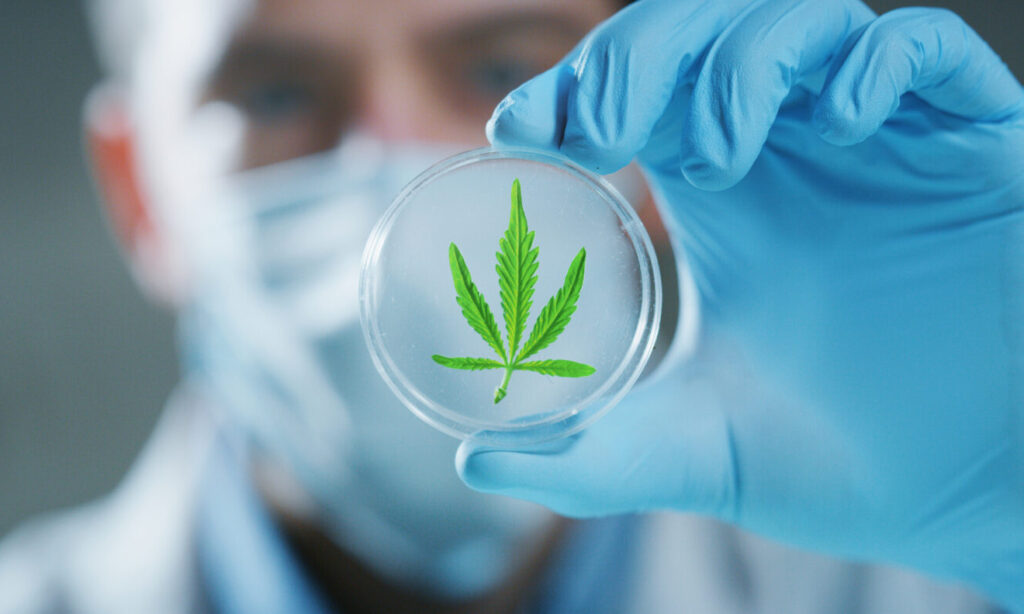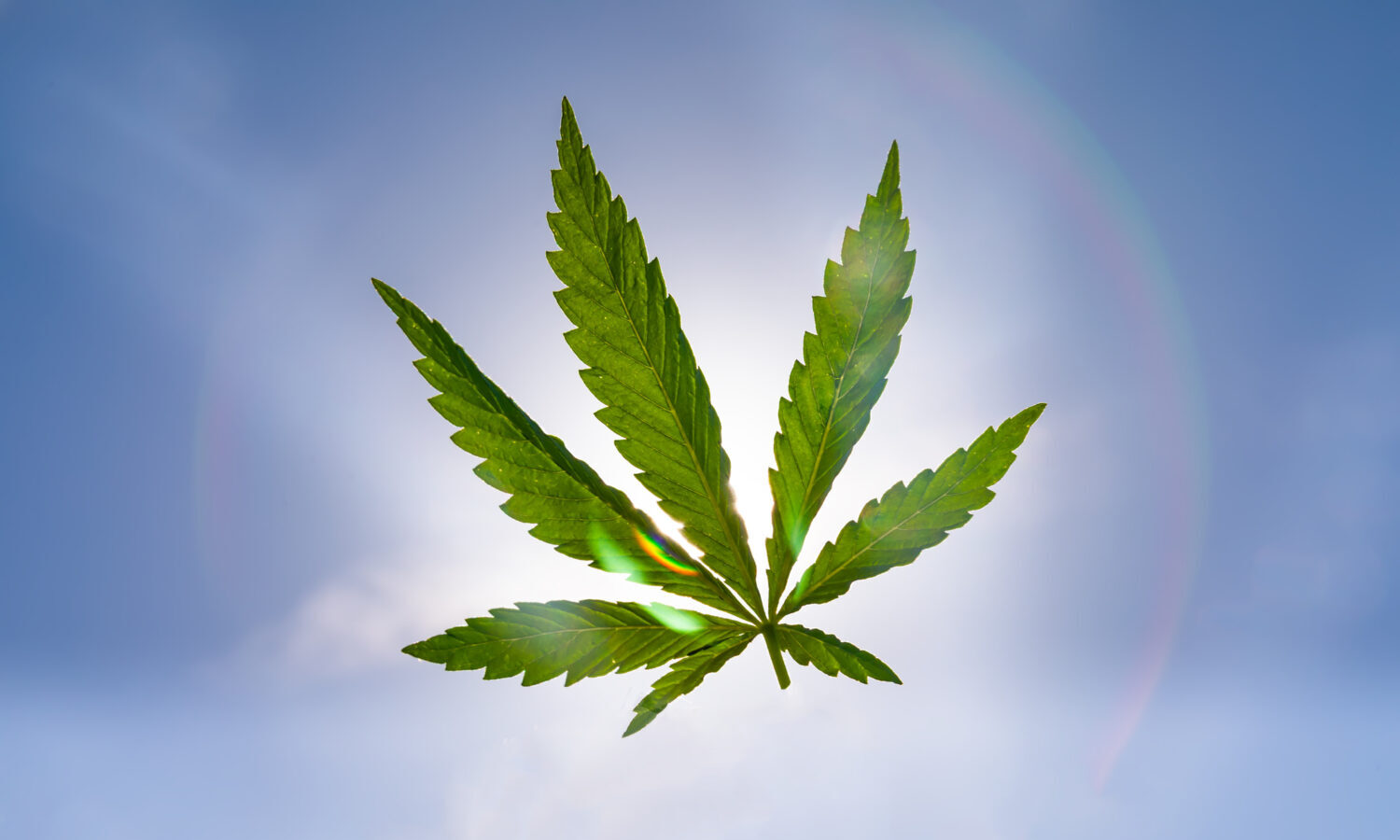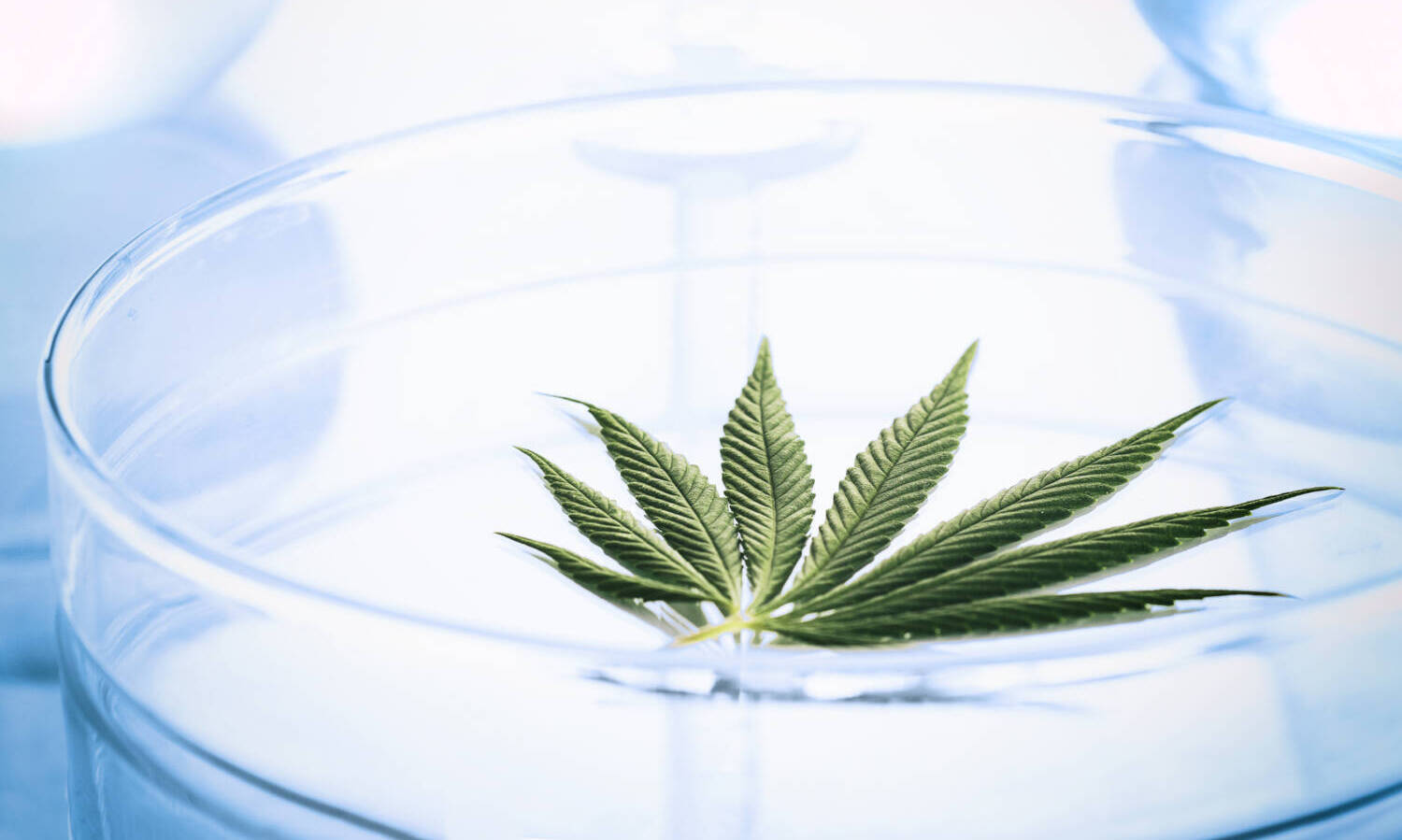
What is CBDA and how does it help the human body?
This article originally appeared on Cannabis.net and has been republished with permission.
Cannabidiolic acid (CBDA) is a minor cannabinoid with significant medical promises. Recent research suggests that CBDA could be an alternative treatment to treat or cure inflammation, anxiety, cancer and seizures. The therapeutic potential of CBDA is the latest discovery in cannabinoid-based medicines.
Introduction to CBDA
Although the research is still in its infancy, researchers believe CBDA could be the next big drug for treating and maintaining overall mental and physical well-being. Many cannabis-based scientists are optimistic that CBDA would reduce the need for conventional drugs with long-term side effects.
Photo by Bloomberg Creative Photos/Getty Images
CBDA is mainly found in cannabis plant material. Like other cannabinoids, large and small, it reacts with the body’s endocannabinoid system and receptors in the central nervous system and immune system.
This lesser-known cannabinoid exists as cannabigerolic acid (CBGA) before it is converted into its true form. The mother cannabinoid CBGA is not only a precursor to CBDA, but also to tetrahydrocannabinol (THCA) and cannabicheomenic acid (CBCA)
Converting CBGA to CBDA
CBGA is converted into CBDA through an enzymatic process. Once formed, it stays that way until the decarboxylation process takes place. Decarboxylation is the conversion of acidic cannabinoids into their decarboxylated forms. CBDA is converted into CBD, THCA into THC, and CBCA into CBC. When cannabis is heated, the decarboxylation process takes place. The molecular structure of cannabinoids changes when they are heated, dried, or treated. The process changes the chemical structure of the substance by removing an acidic carboxyl group.
While certain cannabis plants have been grown to contain balanced levels of CBDA and THCA, CBDA is often found in cannabis plants at very low concentrations. Hemp plants in particular are known to contain significant amounts of CBDA and trace amounts of THCA.
The cannabinoids found in hemp plants can be concentrated through an extraction process. These cannabinoids alter the way cells transmit response signals, which can have a variety of beneficial effects on the mind and body.
CBDA was first discovered and isolated in 1965 by Israeli scientist Rafael Mechoulam. It was subsequently activated into CBD for its medicinal benefits. New studies suggest that CBDA, in its acidic state, may be more effective than CBD in curing or treating some conditions.
Is CBDA Psychoactive?
CBDA does not induce any form of psychoactivity. Like CBD, it cannot induce a high. It’s commonly used for medical patients who don’t want to feel compromised, couch-locked, or want to lose focus. CBDA does not bind to the CB1 and CB2 receptors because it is acidic. Instead, it inhibits the Cox-2 enzyme without affecting the CNS.
RELATED: CBD, CBDa & CBGa: What’s the Difference?
 Photo by Anton Petrus/Getty Images
Photo by Anton Petrus/Getty Images
Benefits of CBDA in hemp products
CBDA is considered an effective treatment for certain medical conditions. Its affinity for binding to serotonin receptors allows it to affect most symptoms, including mood swings, nausea, fatigue, and inflammation.
Compared to CBD, CBDA has been found to have greater activation of 5-HT1A serotonin receptors. Numerous physiological processes, including the regulation of mood, motion sickness, migraines and bowel movements are influenced by serotonin.
According to the available studies, the potential of CBDA as a medicine is still questionable. Clinical investigations have hitherto mainly been based on animal models. We won’t fully understand CBDA’s potential until clinical studies focus on people’s health and its mechanism of action.
Anti-inflammatory effects of CBDA
Due to its properties as a specific Cox-2 inhibitor, CBDA has anti-inflammatory properties and can be effective in reducing inflammation. The functions of cyclooxygenase (Cox) enzymes 1 and 2 vary.
The gastric and intestinal walls are maintained by Cox-1. Cox-2 causes inflammation. Ibuprofen and aspirin are examples of nonsteroidal anti-inflammatory drugs (NSAIDs) that work by blocking the action of these enzymes. The gastrointestinal tract can be damaged by long-term dependence on certain medications.
For this reason, scientists have worked to develop selective Cox-2 inhibitors that do not block Cox-1 enzymes without risking serious damage to the stomach lining and intestines. CBDA works similarly to NSAIDs but without the adverse effects on the digestive system.
Anti-nausea effects of CBDA
Researchers from Guelph University discovered that CBDA is an effective treatment for nausea and vomiting caused by toxins and motion sickness.
The study found that CBDA was particularly fantastic at reducing anticipated nausea. This happens when a patient experiences nausea just prior to chemotherapy. With no recognized cures for this type of nausea, CBDA is an emerging alternative.
The study team also looked at the interactions between the anti-nausea drug ondansetron and CBDA. Researchers discovered that even a minimal amount of CBDA enhanced the drug’s antiemetic effects.
RELATED: Beyond CBD and THC: The Hottest Cannabinoids and Terpenes You Should Know About
 Photo by Nastasic/Getty Images
Photo by Nastasic/Getty Images
Anti-seizure effects of CBDA
Epidiolex, a CBD-based drug, became the first prescription drug to receive FDA approval to treat treatment-resistant epilepsy, bringing CBD to the public. It suggests that its acidic counterpart can reduce the severity and duration of seizures in some cases.
The manufacturer of Epidiolex, GW Pharma, has conducted tests comparing the effects of CBDA and CBD. According to research, CBDA may have a faster-acting effect than its parent molecule and higher bioavailability.
Their research showed that lower doses of CBDA were required for effectiveness, reducing the possibility of harmful side effects. In several cases, CBDA outperformed CBD in reducing seizure frequency.
Final Words: How to use CBDA
There are natural and synthetic CBDA products. However, CBDA extract is more widely available in the burgeoning CBD market.
CBDA cannot be inhaled in its natural form as this would cause the cannabinoid acid to convert to CBD. You can use uncooked cannabis flowers and leaves in recipes. To get your greens without getting high, try eating the leaves raw in a salad, blending them into a smoothie, or making natural cannabis juice.
You can also make tea from raw flower buds that are high in CBDA. Simply put, you have to put them in a cup and let them steep. The CBDA is partially decarbonated by the water instead of being infused into your drink. Many cannabis products contain CBDA. Customers can purchase raw hemp oil items like tinctures, capsules, and raw CBD oil.
This article originally appeared on Cannabis.net and has been republished with permission.

Post a comment: